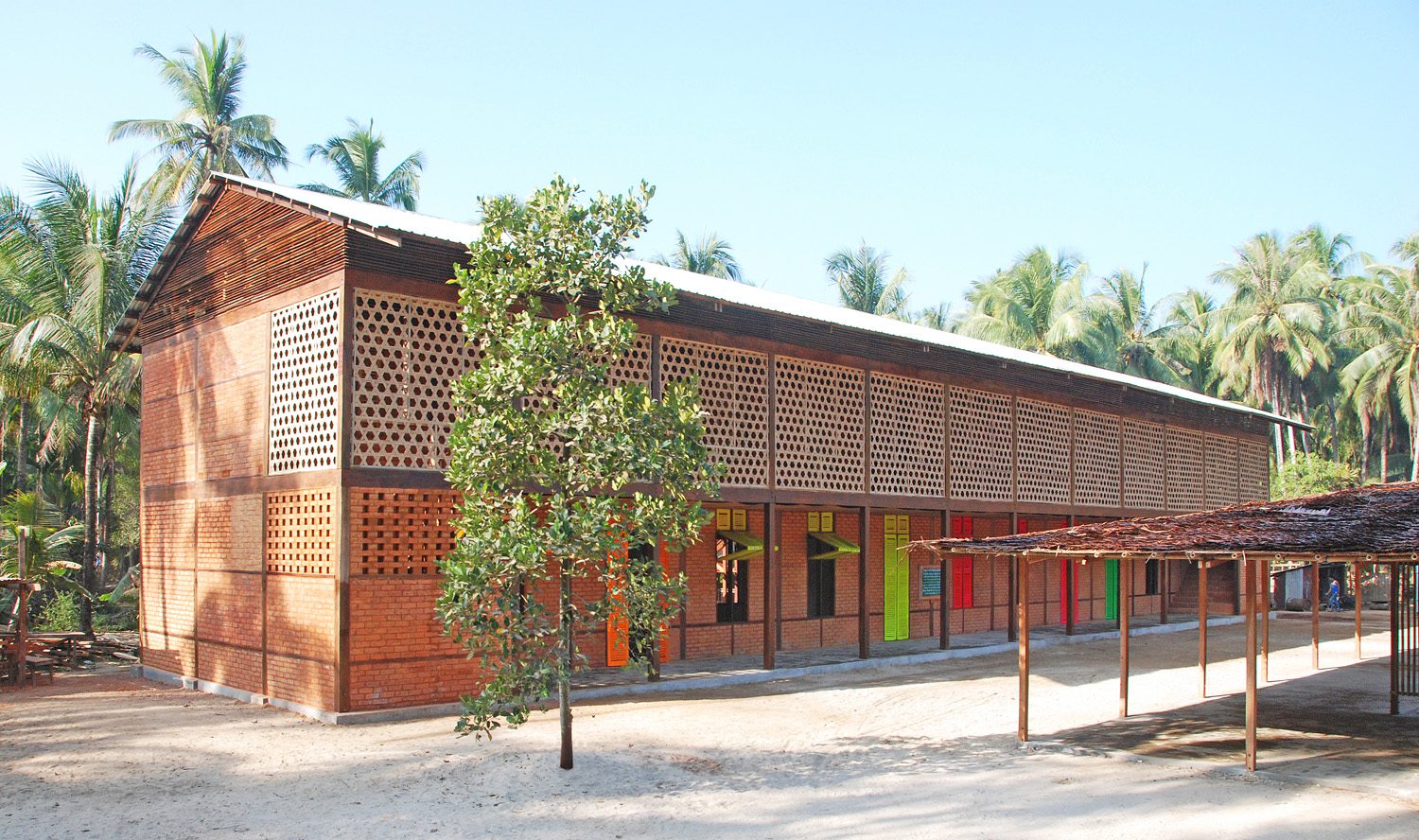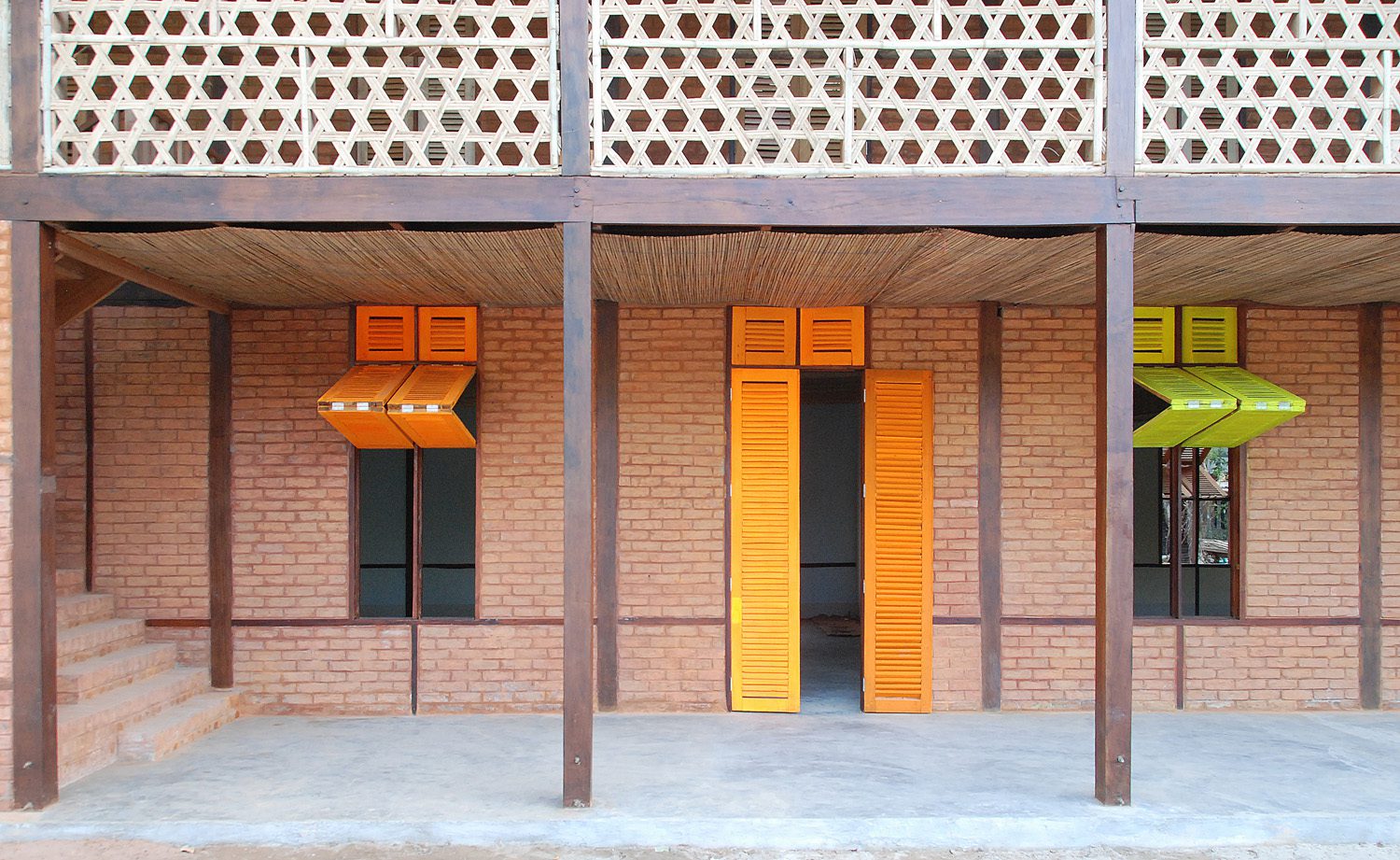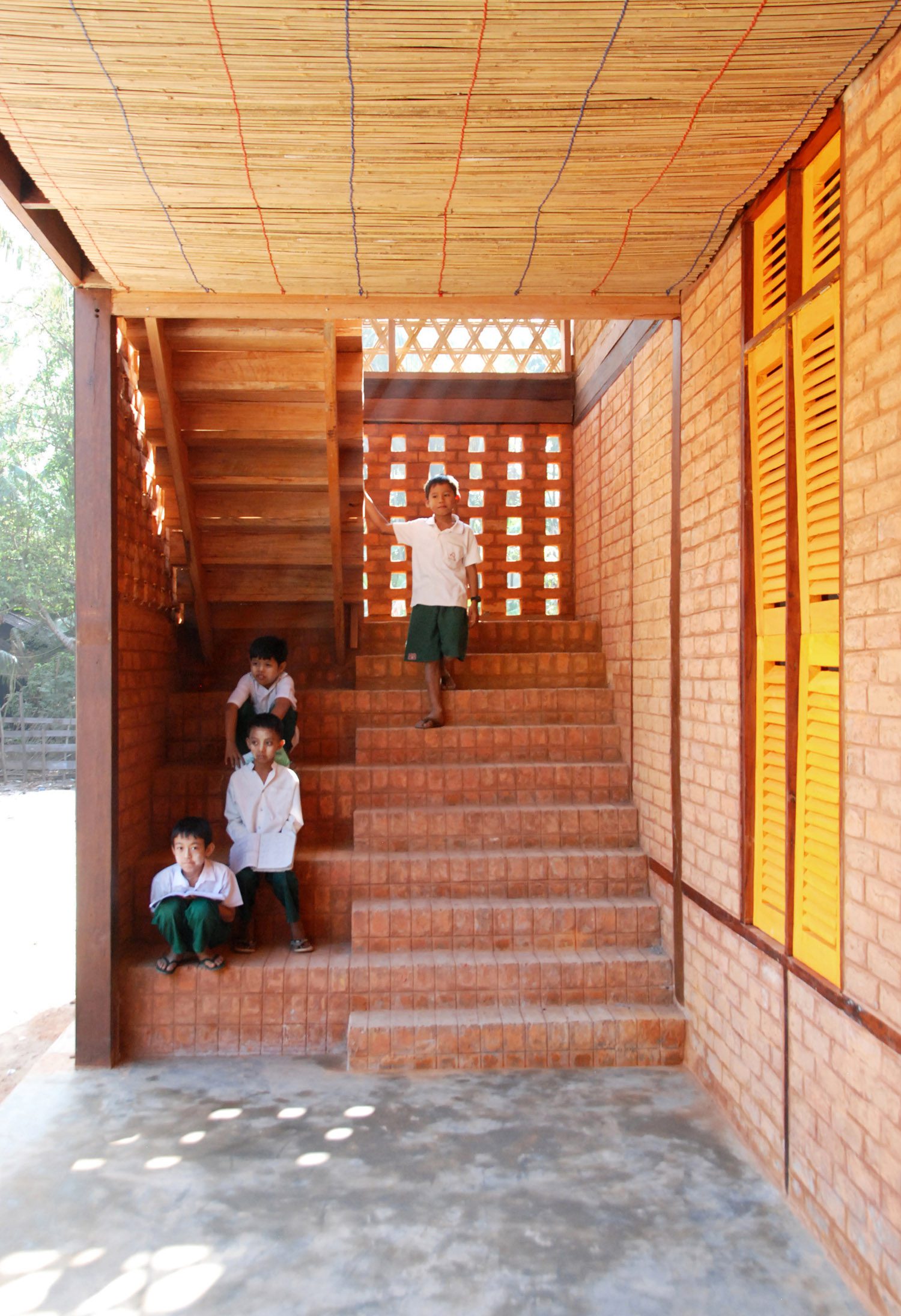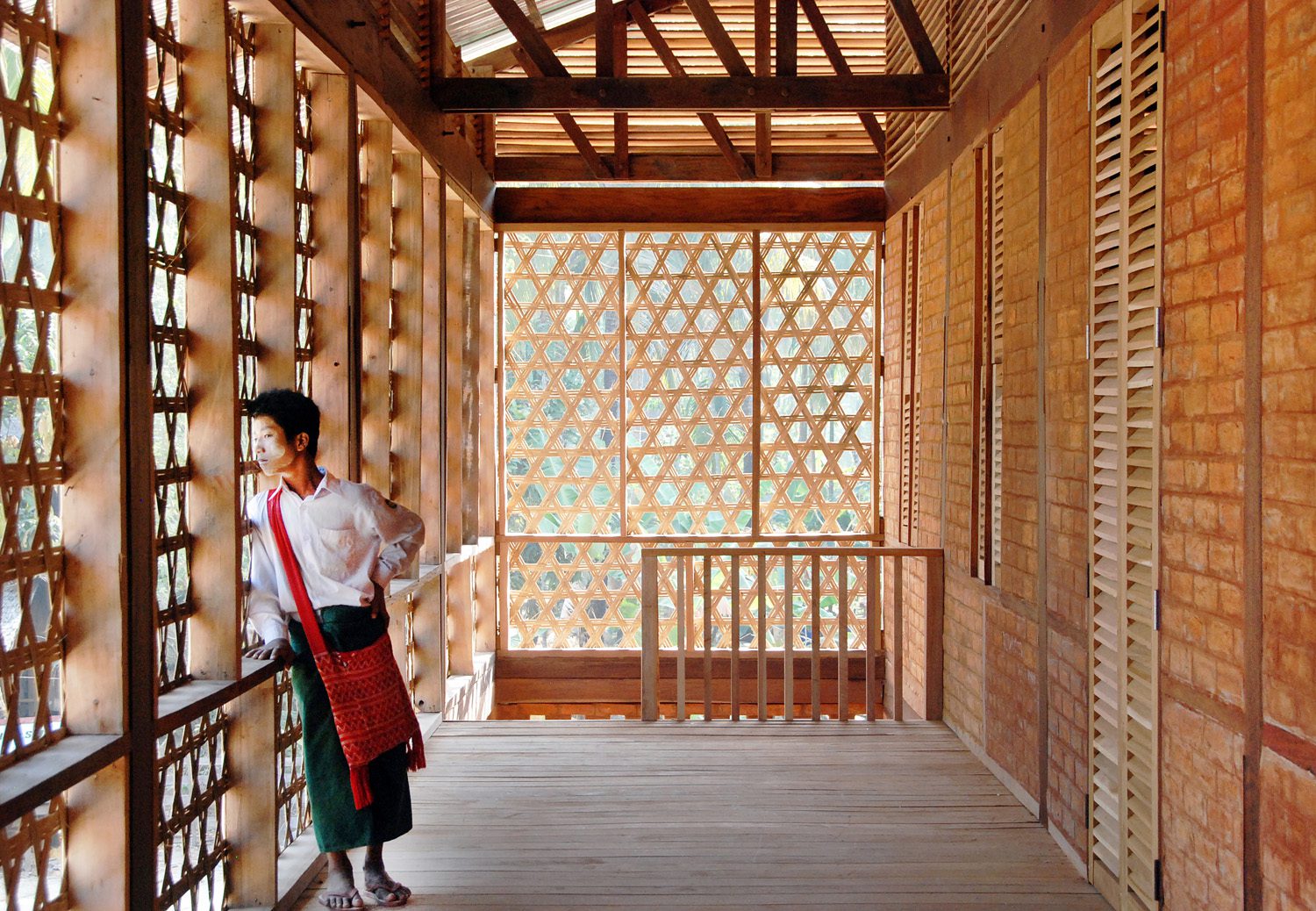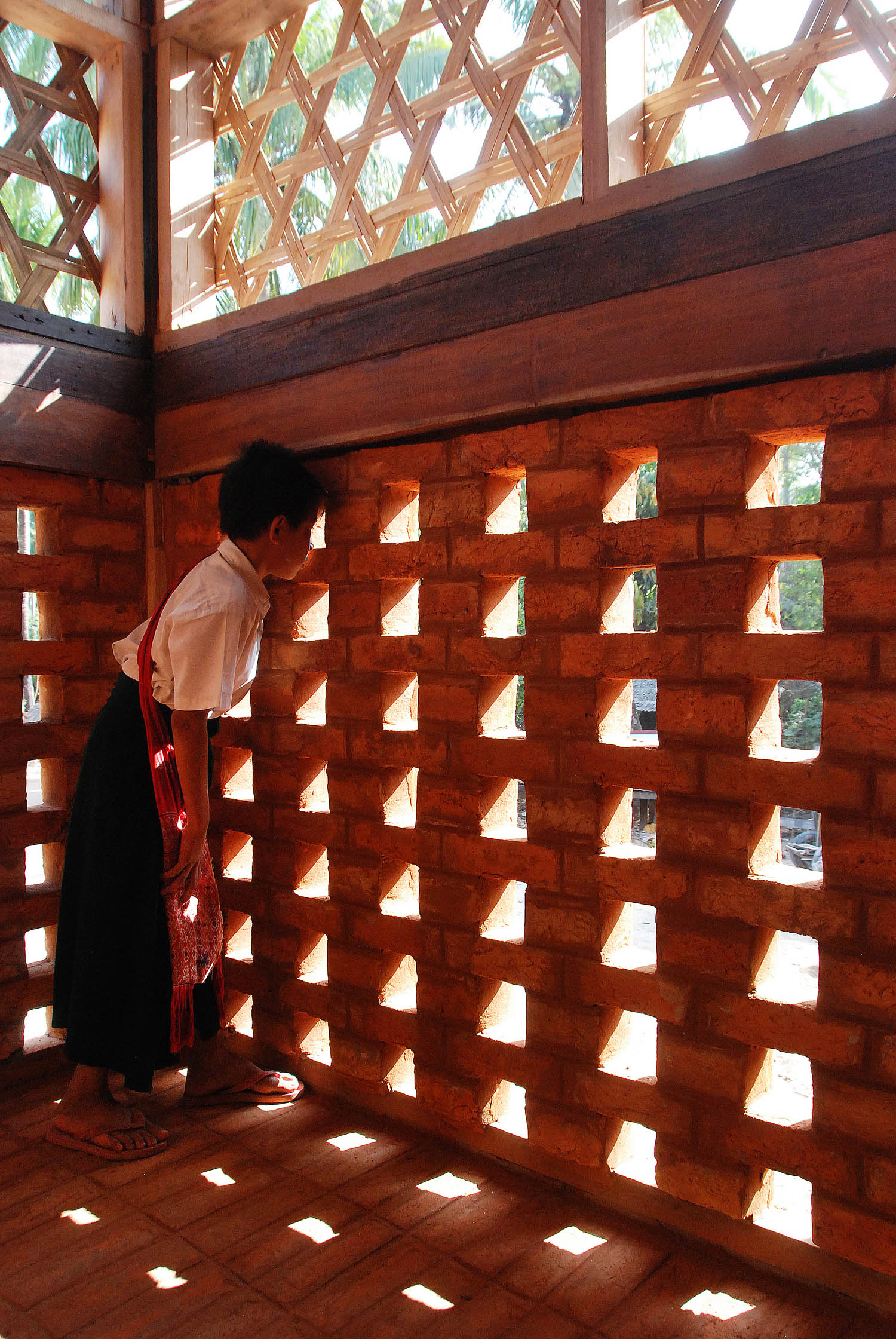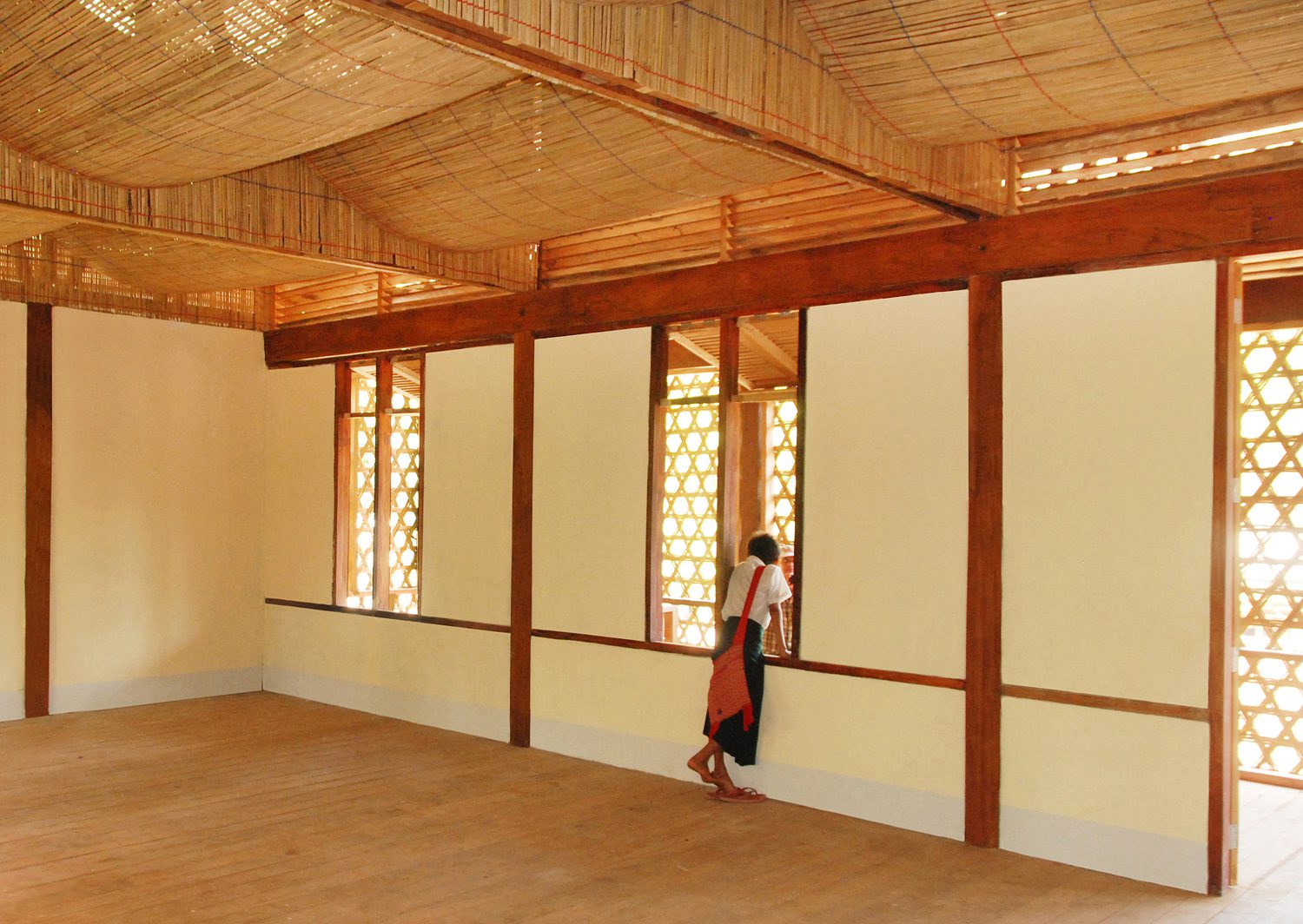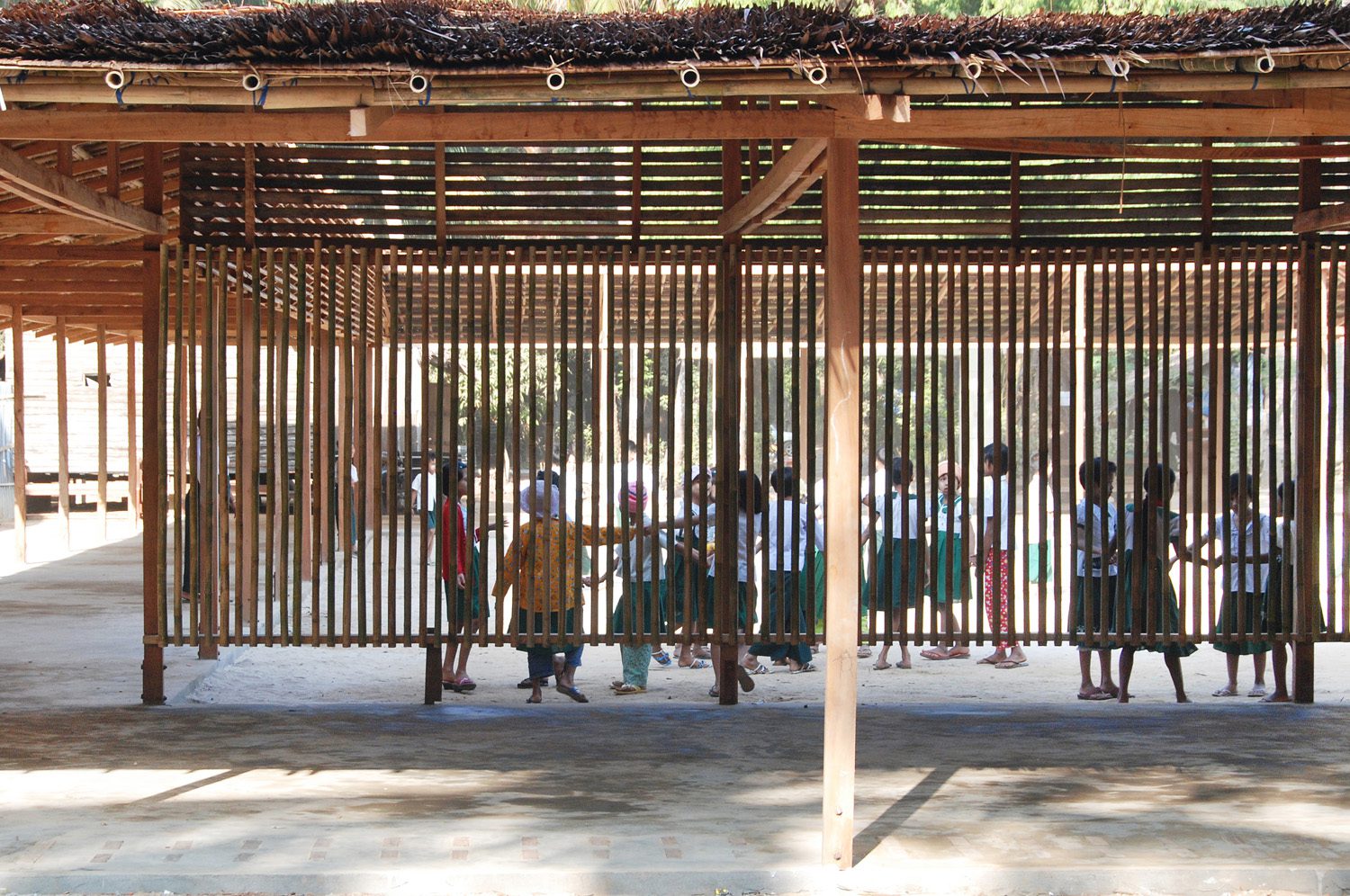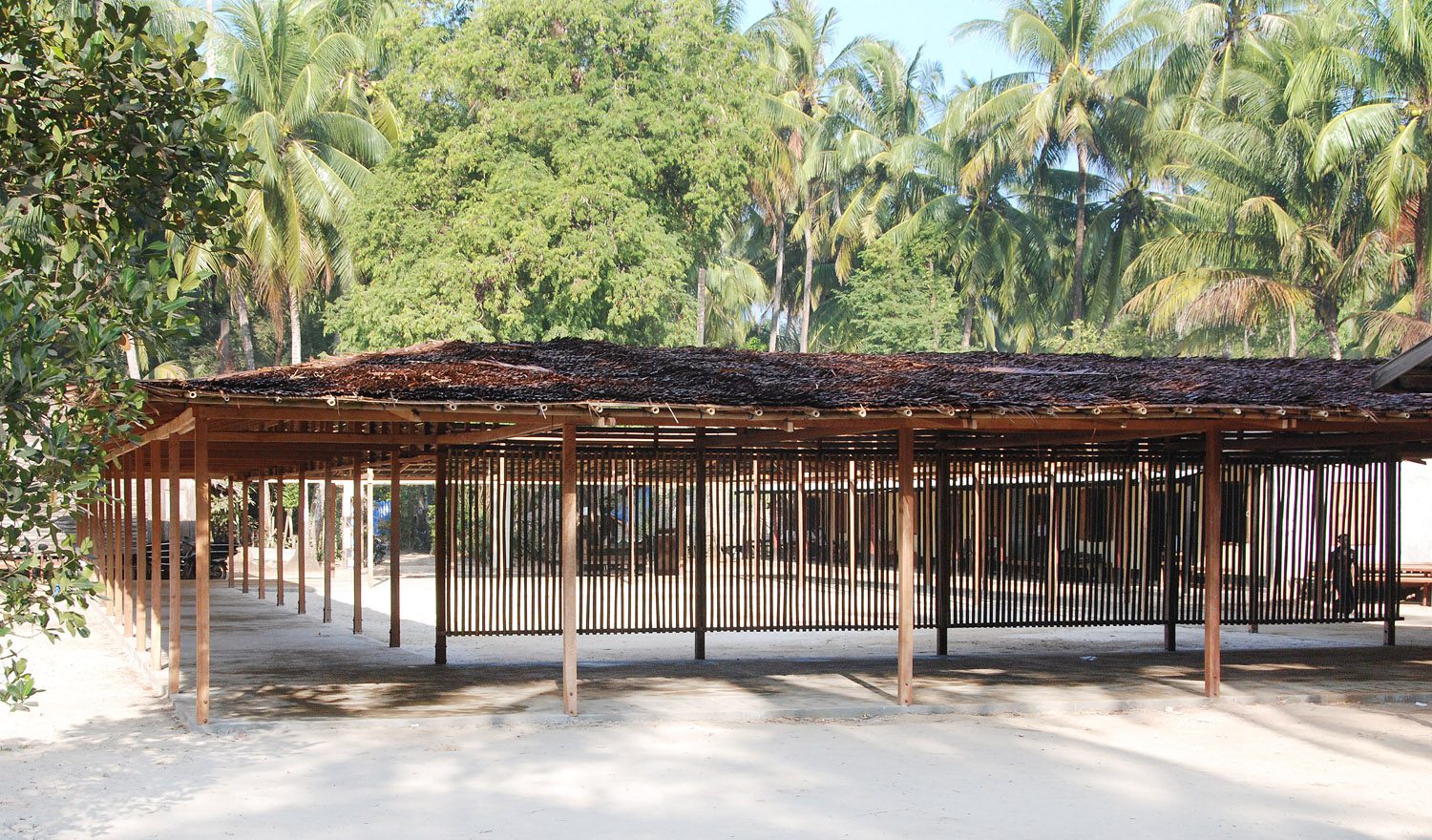High School Thazin/
a+r Architekten
Project Details

Location(City/Country):
Thazin Township, Ngwe Saung, Ayeyarwady Region / Myanmar
Tipology:
Educational
Year (Design/Construction):
2013 / 2014
Area (Net/Gross):
500 m2 / -
Operational Carbon emissions (B6) kgCO2e/m2/y:
-
Embodied Carbon emissions (A1-A3) kgCO2e/m2:
-- All the timber of the previous school is reused for the new wooden framework, for furniture and the pavilion.
- Use of local materials in order to embed the new building carefully into the surrounding area, and reduce the carbon footprint.
- Strong and durable structure in order to use the building as cyclone shelter, built sustainably with ecological and local materials.
- The school is constructed with the traditional ‘brick noggin structure’, a timber frame construction with brick masonry infill on a solid concrete base. All bricks are manufactured locally, bamboo and wood work is produced on site.
- The pergola is designed with an ornamental bamboo mesh, which serves as sun protection.
- Due to the climate there is no need for glass windows, only for shutters serving as rain and sun protection.
- The courtyard becomes an espace for the community and can be used by the whole village after school hours for common activities such as cultural events, village assemblies, open-air cinema, dance performances etc.
The new school building creates space for seven class rooms and a faculty room. An important design idea is the central pavilion which links together the existing elementary school, the library, the headmaster house and the new high school building. The pavilion creates a courtyard, which can be used by the whole village after school hours for common activities such as cultural events, village assemblies, open-air cinema, dance performances etc.
The two-storey building is based on a simple floor plan typology. The architectural language is developed from the traditional way of construction. The attempt is to build with local materials in order to embed the new building carefully into the surrounding area. It has been crucial to build sustainably with ecological materials and at the same time to ensure a strong and durable structure in order to use the building as cyclone shelter.
The school is constructed with the traditional ‘brick noggin structure’, a timber frame construction with brick masonry infill on a solid concrete base. The pergola is designed with an ornamental bamboo mesh, which serves as sun protection. Suspended ceilings made of bamboo and glass wool provide good acoustics and create a warm and comfortable atmosphere within the classrooms.
Due to the climate there is no need for glass windows, only for shutters serving as rain protection. With their fold-out mechanic they function as well as sun protection. The timber louvres within the shutters and underneath the roof ensure excellent air ventilation and prevention against overheating.
All timber of the previous school is reused for the new wooden framework, for furniture and the pavilion.
All bricks are manufactured locally, bamboo and wood work is produced on site. The coloured pigments for doors and windows are from Pathein, a nearby city, which is famous for its umbrella production. The pigments are used for the ornamental umbrella painting.
The project also tried to strengthen the local economy. Only a few highly qualified workers are engaged from Pathein and Yangon. The majority are local workers who are trained on site during the building process.
The project was developed in cooperation with the German NGO Projekt Burma. It is financed by donations and all participants involved are volunteers except the workers on site. The aim was to design a new building, which is not like the common school standard but more creative with a sustainable concept, which can be adapted by the local residents.
Photography: Julia Raff
